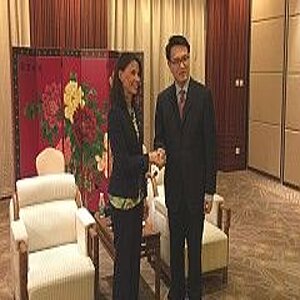German-Chinese Cooperation on Emissions Trading, Market Mechanisms and Mitigation of Industry-Related N2O Emissions
A functioning emissions trading system (ETS) is an effective market-based instrument to protect the climate. China introduced the world's largest ETS at the end of 2017. The project supported the government of China in introducing and refining the ETS by providing advice and training. The focus was on the legal-institutional framework. It also trained private sector participants in the ETS on practical implementation issues. In addition, the project supported the planning and implementation of measures for a sustainable reduction of N2O emissions from the industrial production of nitric acid, adipic acid and caprolactam. The approach included advice, studies, and knowledge exchange on policy instruments and mitigation technology as well as on a robust MRV system. Mitigation potentials of industry-related N2O emissions are not yet included in China's climate goals and provide a basis to increase the level of ambition.
- Countries
- China
- IKI funding
- 8,500,000.00 €
- Duration
- 07/2012 till 04/2023
- Status
- completed
- Implementing organisation
- Deutsche Gesellschaft für Internationale Zusammenarbeit (GIZ) GmbH
- Political Partner
-
- Ministry of Ecology and Environment - China
- National Center for Climate Change Strategy and International Cooperation (NCSC) - China
- Implementing Partner
-
- Ministry of Ecology and Environment - China
- National Center for Climate Change Strategy and International Cooperation (NCSC) - China
- Online
State of implementation/results
- Project completed.
- The world's largest emissions trading system (ETS) is being created in China. The legal basis came into force in February 2021. The system is initially limited to the energy sector and regulates around 4.5 gigatonnes of CO2. In the future, other industrial sectors and civil aviation are to be included step by step. The German federal government has supported this development since 2012 through the International Climate Initiative.
- On May 6, 2022, the project, together with the National Center for Climate Change Strategy and International Cooperation (NCSC), organized a workshop to update the emission factors of regional power grids in China. The workshop served to complete a study for the Ministry of Ecology and Environment (MEE) on updating the emission factors for offset certificates. Experts from Tsinghua University, China Environmental United Center, China Classification Society, China Electricity Council and Energy Research Institute participated.
- On July 13, 2021, the project, together with Tsinghua University and adelphi, organized a workshop on the planned European CO2 border adjustment (EU-CBAM) and the effects on China. The basis for the discussions was the paper "The EU carbon border adjustment mechanism (CBAM) and China - Unpacking options on policy design, potential responses, and possible impacts" (Link).
- Together with the German Emissions Trading Authority (DEHSt) and the China Hubei Carbon Emission Exchange (CHEEX), the project organized a virtual workshop on June 19, 2020 on conceptual issues for the development and operation of an emissions trading register. CHEEX is responsible for the central register of the national ETS in China. The register is an essential part of emissions trading and provides information about who owns which emission certificates.
- The Ministry of Ecology and Environment (MEE) organized from 23.10. until 18.12.2019 a nationwide training series on the national ETS. A total of 17 training courses were held in 15 cities in China, attended by more than 4,400 employees from local administration and energy producers. The organization of the events was coordinated by the National Center for Climate Change Strategy and International Cooperation (NCSC) and supported by the project both financially and through its own presentations. The training series was the most comprehensive capacity building measure of its kind to date and an important milestone for the development of the national ETS before the start of the first commitment period.
- In November 2018, in preparation for the introduction of the national ETS, the project conducted two regional ETS training sessions in Zhengzhou and Wuhan for employees of the provincial administration together with the NCSC. The focus of the training was the use of monitoring plans for measuring and reporting emissions from the energy sector, as they are also used in the emissions trading system of the European Union. The two training courses concluded a six-part training series in which more than 230 representatives of local governments and authorities as well as subordinate institutions were trained on the national ETS in 2018.
Latest Update:
03/2025
Project relations
Legend:
The link has been copied to the clipboard
Related Publications
-
 04/ 2016 | Country Profile
04/ 2016 | Country ProfileClimate Protection in China
Englisch | English (PDF, 477 KB)
Chinesisch | Chinese (PDF, 745 KB)











